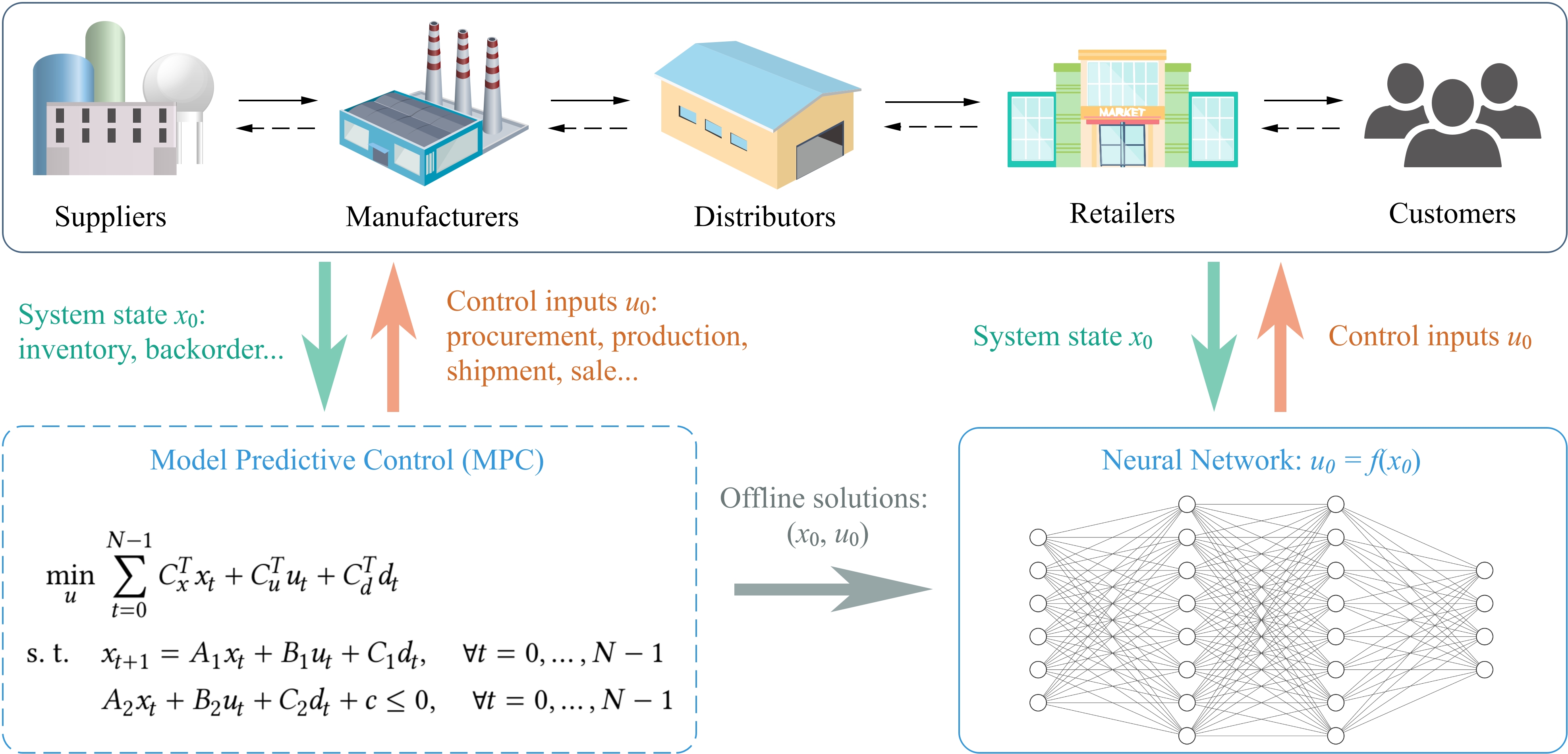Process control is essential for the successful operation of any chemical process. At the MACC, we are researching and developing cutting edge control technologies to meet the challenges of today's industry. We are currently looking at process control for continuous, semicontinuous, and batch processes; advanced model predictive control techniques; strategies for detecting and responding to process faults; integrated optimization and control strategies; and strategies for integrated design and control. Advancements in these areas are applied to applications in energy, biofuels, and bulk chemicals.

Batch processes are indispensable constituent of chemical process industries and are universally used for manufacturing of high-quality products. The preeminent reason for their popularity can be attributed to their flexibility to control different grades of products by changing the initial conditions and input trajectories. However, a batch process is characterized by absence of equilibrium conditions and a highly nonlinear and time-varying dynamics, which make the classical approaches (for continuous processes) not directly applicable. A fundamental objective in a typical batch process is to achieve the final product quality specifications. The measurements related to the terminal quality are usually not available during the batch operation and can only be accessible at the end of batch operation. Thus, it is not feasible to directly measure/control the quality of the product during the operation and can be achieved indirectly via trajectory tracking approach. An integral component of such approach is to build an accurate model for the process; particularly from past process data as high-fidelity model of such processes have confined applicability in practice. Therefore, MACC researchers are investigating and developing approaches based on PLS, subspace identification and machine learning, specifically tailored to batch processes, for identifying process and/or quality model using historical data. The predictive ability of the identified data-driven model to reasonably predict the terminal quality during the batch is then utilized within Model Predictive Control (MPC) framework for accomplishing desired terminal quality of the batch. Some of the applications being considered include pharmaceutical processes, hydrogen startup process and rotational molding process. Many of the projects in these areas are in collaboration with industries (e.g. Imperial Oil, Sartorious, Linde.Digital) and other academic research groups at McMaster (e.g. McMaster Manufacturing Research Institute).

Researchers
Recent Papers
Real-time optimization (RTO) involves the adjustment of plant operating conditions to track the economic optimum which may shift with time due to external disturbances as well as changing plant parameters. Process plants operate in an increasingly dynamic environment due to variation in demand, raw material quality, and utility prices, leading to exploration of the use of dynamic models in RTO. Our key contribution in this area has been the development of a novel dynamic RTO (DRTO) formulation that accounts for the effects of an underlying constrained model predictive control (MPC) system on the predicted plant response, and its extension for coordination of multiple MPC systems in a distributed MPC architecture. The strategy has recently been extended to include production scheduling decisions ‐ this results in production scheduling decisions in which the dynamics of transitions as well as the actions of the underlying control system are taken into account.

Researchers
Recent Papers
-
Robust model predictive control via multi-scenario reference trajectory optimization with closed-loop prediction
Hao Li , Christopher LE Swartz - Journal of Process Control, 2021 - [Publisher Version] -
Robust model predictive control with embedded multi-scenario closed-loop prediction
Lloyd Mackinnon , Hao Li , Christopher LE Swartz - Computers & Chemical Engineering, 2021 - [Publisher Version]
Model predictive control (MPC) has become the advanced control method of choice in the chemical process industry, and has been widely adopted in other industrial sectors. It utilizes an internal dynamic model which is embedded in an optimization formulation to calculate future plant inputs to minimize a performance criterion such as the set-point tracking error over a future time horizon. Key advantages are its ability to handle input and output constraints directly, its accounting for multivariable interactions through the process model, and its flexibility in in terms of model type, performance objectives and constraints. MACC has been active in MPC applications involving high-fidelity nonlinear models and an economic objective function. Applications include economic MPC (EMPC) of electric arc furnaces that includes use of a nonlinear state estimation scheme, and EMCP of process plants under unit failure conditions. We have also explored the use of linear dynamic data-driven models in EMPC applications, and application of robust EMPC to supply chain operation.

Researchers
Recent Papers
-
Robust Multi-Scenario Dynamic Real-Time Optimization with Embedded Closed-Loop Model Predictive Control
Lloyd Mackinnon , Christopher LE Swartz - IFAC-PapersOnLine, 2021 - [Publisher Version]
Traditionally, most of the research in fault-tolerant control has been concerned with preserving nominal process operation in the presence of faults. This has been addressed within the so-called reliable control approaches (which essentially treats the faults as disturbances and designs fault-tolerant controllers) and reconfiguration-based control approaches that assume the existence of a backup control configuration. Yet, there are numerous examples in the chemical process industries where the process economics do not permit deployment of redundant control configurations. In such scenarios, the only recourse is the swift recovery of the failed component. During the fault-recovery period, however, the absence of an established framework to handle such situations, and the use of ad-hoc approaches could lead to the onset of hazardous situations or the inability to resume nominal operation upon fault-recovery. Motivated by these considerations we have developed, utilizing the nonlinear predictive controllers described in the previous section, a safe-parking framework to handle process operation during failure conditions (Gandhi and Mhaskar, 2008). To this end, first Lyapunov-based model predictive controllers, that allow for an explicit characterization of the stability region subject to constraints on the manipulated input, are designed. The stability region characterization is utilized in selecting `safe-park' points from the safe-park candidates (equilibrium points subject to failed actuators). Specifically, a candidate parking point is termed a safe-park point if 1) the process state at the time of failure resides in the stability region of the safe-park candidate (subject to depleted control action), and 2) the safe-park candidate resides within the stability region of the nominal control configuration. Performance considerations, such as ease of transition from and to the safe-park point and cost of running the process at the safe-park point, are then quantified and utilized in choosing the optimal safe-park point. Subsequently, we have addressed the implementation of the safe-park framework handling uncertainty and limited availability of measurements (Mahmood, Gandhi, and Mhaskar, 2008), subject to recycles and other kinds of networks, as well as considered the problem of fault-diagnosis (estimating the size of the fault) and fault isolation. More recently, we have focussed on sensor fault detection and isolation as well.

Researchers
Recent Papers
-
A hybrid control design for stabilisation of nonlinear systems from the null controllable region
Maaz Mahmood , Tyler Homer , Prashant Mhaskar - International Journal of Control, 2022 - [Publisher Version] -
Artificial neural network based model predictive control: Implementing achievable set-points
Hesam Hassanpour , Brandon Corbett , Prashant Mhaskar - Process Systems Engineering, 2021 - [Publisher Version] -
Controllability minimum principle based construction of the null controllable region for nonlinear systems
Maaz Mahmood , Tyler Homer , Prashant Mhaskar - International Journal of Robust and Nonlinear Control, 2021 - [Publisher Version] -
Flooding and offset-free nonlinear model predictive control of a high-purity industrial ethylene splitter using a hybrid model
Mahir Jalanko , Yoel Sanchez , Prashant Mhaskar , Vladimir Mahalec - Computers & Chemical Engineering, 2021 - [Publisher Version]
Multivariate data analysis techniques have been developed and applied to process plants over the span of about 30 years, with majority of work in this area spearheaded by MACC emeritus faculty member Dr. John MacGregor. MACC’s strong foundation and in data analytics, mathematical modeling, advanced control and optimization have positioned it well to make contributions in the present explosion of interest in the areas of big data and intelligent systems.

Researchers at the MACC are collaborating with industrial partners (and seeking further collaboration) on the utilization of available process knowledge in synergy with various data-driven modeling approach. The hybrid modeling approaches manifest themselves in a variety of forms. One instance combines principle component analysis with neural network based dynamic modeling and control to address the possible overfitting problems with dynamic neural networks. Other applications involve combining first principles based models with subspace identification approaches for dynamic modeling and control, and yet another combines principal component analysis with first principles models for the purpose of fault diagnosis.
Researchers
Recent Papers
-
Application of data-driven modeling approaches to industrial hydroprocessing units
Debanjan Ghosh , Jesús Moreira , Prashant Mhaskar - Chemical Engineering Research and Design, 2022 - [Publisher Version] -
Adaptive system identification of industrial ethylene splitter: A comparison of subspace identification and artificial neural networks
Mahir Jalanko , Yoel Sanchez , Vladimir Mahalec , Prashant Mhaskar - Computers & Chemical Engineering, 2021 - [Publisher Version] -
Model predictive control using subspace model identification
Nikesh Patel , Brandon Corbett , Prashant Mhaskar - Computers & Chemical Engineering, 2021 - [Publisher Version] -
Polymethyl Methacrylate Quality Modeling with Missing Data Using Subspace Based Model Identification
Nikesh Patel , Kavitha Sivanathan , Prashant Mhaskar - Processes, 2021 - [Publisher Version]
Latent variable (LV) techniques such as principal components analysis (PCA) and partial least square (PLS) area at the core of many of the developments in data analytics techniques within MACC. These methods compress the data into a low dimensional space that captures the bulk of the variation in the data. Applications include process monitoring and fault detection, model predictive control, image analysis, and product design. Current work includes use of LV methods for monitoring the performance of supply chain systems, and detecting abnormal conditions such as transportation delays.

Researchers
Recent Papers
-
Hybrid Partial Least Squares Models for Batch Processes: Integrating Data with Process Knowledge
Debanjan Ghosh , Prashant Mhaskar , John F. MacGregor - Industrial & Engineering Chemistry Research, 2021 - [Publisher Version]
Machine learning can be used for many chemical process problems that cannot be solved easily using rules-based programming. Machine learning is concerned with making computers learn through historical data, observations and interacting with the world and utilize this knowledge to generalize over new unseen settings. At the MACC, we are currently looking at machine learning as being a data-driven modelling tool for complex processes that are hard to model using first-principles models. These developed models can generate better predictions allowing more effective control for many complex chemical engineering processes. Also, we are exploring the possibility of integrating first principle models which contains process knowledge with machine learning algorithm to improve the generalization capability of the black-box models generated solely by machine learning. The capability of machine learning algorithms to find valuable underlying patterns within complex data makes it suitable for fault detection and diagnosis applications which is also part of our research here at MACC.
Researchers
Recent Papers
Optimization of process plant operations and design is of critical importance for industries to remain competitive in an environment of increased globalization, narrowing profit margins, more stringent product quality requirements and tightening environmental constraints. We are actively involved in the development of optimization algorithms and tools, as well as a variety of applications including nonlinear predictive control, real-time optimization, supply chain optimization, planning and scheduling, integrated plant and control system design, abnormal situation response, and batch process operation and control.

Activities of MACC in planning and scheduling are strongly oriented toward industrial applications, through which we have made advances in novel formulations and computational strategies. This includes optimal scheduling of furnace and converter operation in a nickel smelting plant, optimal production scheduling in a food manufacturing operation, and optimal scheduling of hydropower generation systems. The hydropower scheduling application includes consideration of uncertainty in electricity prices, inflows and plant parameters, for which stochastic programming and model-based feedback control strategies have been developed. Applications of planning under include optimal raw material purchase planning under uncertainty in primary steelmaking, and multiperiod refinery planning. The above studies have involved collaboration with five industrial partners, leading in several cases to in-house adoption of the approaches within the company.

Researchers
Recent Papers
-
Refinery production planning optimization under crude oil quality uncertainty
Fupei Li , Feng Qian , Wenli Du , Minglei Yang , Jian Long , Vladimir Mahalec - Computers & Chemical Engineering, 2021 - [Publisher Version] -
Robust online scheduling for optimal short-term operation of cascaded hydropower systems under uncertainty
Pulkit Mathur , Christopher LE Swartz , Danielle Zyngier , Francois Welt - Journal of Process Control, 2021 - [Publisher Version]
An effective way of incorporating uncertainty in optimization formulations is to use a two-stage stochastic programming approach, in which multiple scenarios corresponding to uncertainty realizations are embedded within a single optimization formulation. However, the already large- scale dynamic optimization problems typical of complex industrial systems becomes significantly amplified with an increasing number of scenarios. We developed within MACC a novel parallel computing approach for solving large-scale dynamic optimization problems problems of this type. It utilizes a multiple-shooting method for integration of the differential- algebraic equation (DAE) system, in which the time horizon is partitioned into a number of intervals, with the initial states in each interval treated as optimization decision variables. The integration over the intervals for the various scenarios can thus be treated as independent integration tasks, suitable for distribution to multiple processors. Our work includes parallelization of the nonlinear programming solution through sequential quadratic programming with parallel solution of the quadratic programming subproblems.

Researchers
Recent Papers
-
Bounding convex relaxations of process models from below by tractable black-box sampling
Yingkai Song , Huiyi Cao , Chiral Mehta , Kamil A. Khan - Computers & Chemical Engineering, Volume 153, 2021 - [Publisher Version] -
Enclosing Reachable Sets for Nonlinear Control Systems using Complementarity-Based Intervals
Huiyi Cao , Kamil A. Khan - IFAC-PapersOnLine, 2021 - [Publisher Version] -
Optimization-based convex relaxations for nonconvex parametric systems of ordinary differential equations
Yingkai Song , Kamil A. Khan - Mathematical Programming, 2021 - [Publisher Version]
Dynamic optimization is a key thread that runs through much of our work. It involves solution of an optimization problem that includes a differential or differential-algebraic equation system as constraints. Applications that we consider include optimization of plant operation in response to demand and electricity price fluctuations, optimization of industrial batch process operations, and optimal response under plant failure conditions, examples of which are given below. - Optimization of Air Separation Unit (ASU) Operation Cryogenic air separation plants separate air into oxygen, nitrogen and argon products by distillation. They are huge consumers of electricity, primarily due to the compression required to liquify the air feed, and would consequently benefit from demand response operation, where the production levels are adjusted in accordance with electricity price fluctuations. MACC researchers have been involved in the development of first-principles dynamic models for air separation plants, as well as their use within optimization formulations to determine optimal operating policies in response to demand and electricity price fluctuations, and to identify design limitations to plant agility. We are also determining optimal start-up operation of ASUs that takes into account discontinuous plant behaviour due to, for example, sequential filling up of distillation column trays. - Steel Process Optimization Electric arc furnaces (EAFs) are widely used in the steel industry for melting scrap. The highly energy intensive nature of these operations, coupled with their complexity, make them prime candidates for optimization. Our group developed a first-principles based dynamic model of the EAF which was calibrated to an industrial operation by estimating model parameters using plant data. Optimization of input trajectories for a number of constraint and objective function scenarios demonstrated significant potential savings. A current related study involves modeling and optimization of basic oxygen furnaces (BOFs); they are used to adjust the chemistry and temperature of steel from a blast furnace to appropriate levels for casting. The goal is to develop an optimization-based decision support system for BOF operation in order to minimize the operational cost (for example through reducing the total oxygen utilization) through adjustment of operating parameters such as lance height and oxygen flow rate over the duration of the batch. - Optimal Response under Partial Plant Shutdown Shutdowns in chemical processing plants are detrimental both to plant economics and critical product characteristics. These situations can be due to routine maintenance, or due to the more extreme case of equipment failure. We have developed a formulation and computational strategy for determining optimal operating policies in the face of shutdowns in multi-unit operations, with application to a Kraft pulp mill. Extensions have included the optimal design of additional storage tank capacities in accordance with probability distributions of failure type and duration; and consideration of model uncertainty via multi-scenario optimization. Related work under way involves the development of a multiperiod refinery planning optimization formulation to mitigate the detrimental economic impact of refinery unit shutdowns.

Researchers
Recent Papers
-
A dynamic optimization framework for basic oxygen furnace operation
Daniela Dering , Christopher LE Swartz , Neslihan Dogan - Chemical Engineering Science, 2021 - [Publisher Version]
A supply chain (SC) is a network of facilities that performs the functions of raw material procurement, raw material transformation into intermediate and finished products, and distribution of products to customers. A supply chain typically covers a large geographical region, and its operation has a significant impact on the economic performance of an enterprise. Within our group, we consider strategies for optimal supply chain operation and design, as well as the development of computational tools for supply chain performance analysis. Work in this area includes (i) a novel robust model predictive control formulation for application to process supply chain systems, (ii) a supply chain formulation that includes time-limited transportation contracts within an optimal supply chain design, and (iii) development of a systematic framework for supply chain operability analysis, motivated by Canadian forest products industry transformation from commodity production to integrated biorefineries producing biofuels and specialty chemicals, where flexibility and responsiveness to accommodate market variation, feedstock variability and fluctuating customer demands is a key consideration.

Researchers
Recent Papers
One of the main pillars of process systems engineering is the field of process design—that is, combining chemical engineering unit operations together into a working process system. At MACC, we are working to develop new and innovative chemical processes which improve the "triple-bottom-line of sustainability" — meaning that the processes are not only more environmentally friendly, but also socially acceptable and yet still economical. This can take several forms, such as reducing or eliminating CO2 emissions at low cost, reducing the amount of fossil fuels that must be consumed, increasing the use of renewable resources, reducing the "cradle-to-the-grave" life-cycle impact of a process, or improving the thermal efficiency.

Process plants are subject to changing conditions that include feedstock variation, drift in process parameters such as heat transfer coefficients, product demand, and utility prices. In order to remain operable under changing conditions, plants need to be able to operate at steady state over an expected uncertainty range, as well as be able to reject disturbances and transition rapidly and smoothly between operating points. The former characteristic is often denoted as flexibility, and the latter as resiliency or dynamic operability. MACC researchers have been at the forefront of developing computational formulations for tools for operability analysis, and its incorporation into optimal design calculations. This includes rigorous incorporation of input saturation effects and consideration of the presence of model predictive control in plant operability analysis, identification of design limitations to the responsiveness air separation plants to changes in product demand and electricity prices, and use of rigorous distillation models in flexible plant design. We have also extended the concepts and developed optimization-based formulations for flexibility and dynamic operability of supply chain systems.
Researchers
Recent Papers
Integrated Community Energy systems (ICEs) provide not only electricity for communities on the scale of ten thousand people, but also harvest waste heat generated in electricity production process. The captured thermal energy can be distributed via steam or hot water pipes to the buildings, which reduces the need for natural gas boilers. Examples of combined heat and power units (CHP), which are key components of ICEs, are internal combustion engine connected with a generator, gas turbine and fuel cells. Short term and long term thermal storage can be integrated into ICEs for peak shaving, which makes the operation of the system more stable. Moreover, replacing typical gas boilers with thermal storage reduces greenhouse gas (GHG) emissions and plays a major role in Canada’s commitment to fighting climate change. At night, or when demand is less than power supply, ICEs can store excess energy in various forms (e.g., in batteries or as fuels like hydrogen). During times of excess, solid oxide fuel cells (SOFCs) can be run backward, in electrolyser mode to produce H2 as a form of energy, which can be stored and transported in the existing natural gas network. The current natural gas network can contain up to 5% hydrogen. We are developing models to design, optimize and control ICEs to meet electrical and thermal demands and reduce associated GHG emissions.

Researchers
Recent Papers
-
Integrated design and operation of energy systems for residential buildings, commercial buildings, and light industries
Ruonan Li , Vladimir Mahalec - Applied Energy, 2022 - [Publisher Version] -
A Mathematical Model for Prediction of Long-Term Degradation Effects in Solid Oxide Fuel Cells
Mina Naeini , Haoxiang Lai , James S. Cotton , Thomas A Adams II - Industrial & Engineering Chemistry Research, 2021 - [Publisher Version] -
Economically Optimal Sizing and Operation Strategy for Solid Oxide Fuel Cells to Effectively Manage Long-Term Degradation
Mina Naeini , James S. Cotton , Thomas A Adams II - Industrial & Engineering Chemistry Research, 2021 - [Publisher Version] -
Greenhouse gas emissions reduction by cross-sector integration of energy systems: Optimal sizing of integrated entities
Ruonan Li , Vladimir Mahalec - Energy Conversion and Management, 2021 - [Publisher Version] -
Integration of energy systems for buildings and light industrial plants
Ruonan Li , Prashant Mhaskar , Vladimir Mahalec - Energy, 2021 - [Publisher Version]
In this topic, we are looking at the design of new technologies which can help create liquid fuels in a more sustainable way. For example, we are currently developing new syngas cooling technology to be used inside of a downdraft gasifier. Currently, a radiant syngas cooler can be used to cool very hot coal-derived syngas by producing steam. While this helps with thermal management, a significant amount of exergy is lost because the high-temperature heat (1300°C) is not used to its full potential. Therefore, we propose using the natural gas reforming reaction as the coolant mechanism, which produces valuable H2-rich syngas. Not only does this approach result in higher thermal efficiencies and higher profitability, but when properly integrated into a process which produces liquid fuels, results in lower CO2 emissions as well. Other new technologies currently in development include using high-temperature heat from a modular helium reactor to power natural gas reforming, and developing new adsorbents for more efficient syngas treatment and upgrading.

Researchers
Recent Papers
Semicontinuous chemical separation processes are unsteady-state processes which fall somewhere between traditional batch and traditional continuous processing. Typically, multiple separation steps are combined into one process unit, operating cyclically, but without startup and shutdown stages. For example, a single distillation column tightly integrated with a "middle" vessel (a tank which both feeds to and receives a side-draw from the column) can separate a three component mixture semicontinuously, whereas two distillation columns would be required for traditional continuous processing. Pioneering efforts into semicontinuous separations have demonstrated the economic superiority of the technique at intermediate production rates compared to traditional batch and continuous methods. This is particularly useful for the production of biofuels, where high transportation costs of biomass tend to incentivize the use of a distributed network of small biofuel plants as opposed to a single huge plant. We are currently developing semicontinuous processes for biofuels such as biobutanol and bioDME (dimethyl ether) which can displace petroleum gasoline and diesel. This will not only increase the profitability of renewable fuels but also reduce the total lifecycle environmental impact as well.
Researchers
Recent Papers
We are developing new, more sustainable processes which convert biomass, coal, natural gas, shale oil, and/or nuclear energy into energy products such as electricity, gasoline, diesel, methanol, dimethyl ether, and hydrogen. Process innovations can reduce lifecycle CO2 emissions, improve the thermal and carbon efficiencies, reduce fossil fuel consumption, and increase the profitability. For example, we are investigating processes which use solid oxide fuel cells to generate electricity. Not only are SOFCs efficient electrochemical devices, but when properly integrated into an energy system, electricity can be produced from fossil fuels with zero CO2 emissions. However, many challenges must be overcome before they can be used flexibly and reliably enough to satisfy peaking power demands at the municipal scale. Other projects of interest include flexible and sustainable polygeneration processes which can change their products throughout the day based on market prices or demand, and chemical looping-based polygeneration processes which can co-produce liquid fuels and electricity with zero CO2 emissions.

Researchers
Recent Papers
-
Advanced petroleum coke oxy‐combustion power generation with carbon capture and sequestration: Part I—Design and techno‐economic analysis
Ikenna J Okeke , Thomas A Adams II - The Canadian Journal of Chemical Engineering, 2021 - [Publisher Version] -
Design and eco-technoeconomic analyses of SOFC/GT hybrid systems accounting for long-term degradation effects
Haoxiang Lai , Nor Farida Harun , David Tucker , Thomas A Adams II - International Journal of Hydrogen Energy, 2021 - [Publisher Version] -
Design strategies for oxy-combustion power plant captured CO2 purification
Ikenna J Okeke , Tia Ghantous , Thomas A Adams II - Chemical Product and Process Modeling, 2021 - [Publisher Version] -
Optimal design and operation of a waste tire feedstock polygeneration system
Avinash S.R. Subramanian , Truls Gundersen , Thomas A Adams II - Energy, 2021 - [Publisher Version] -
Simulation studies on the co-production of syngas and activated carbon from waste tyre gasification using different reactor configurations
Lanrewaju I. Fajimi , Bilainu O. Oboirien , Thomas A Adams II - Energy Conversion and Management: X, 2021 - [Publisher Version]




































